Abstract
A time-series method is presented, nontechnically, for analysis of data generated in individual-subject operant studies, and is recommended as a supplement to visual analysis of behavior change in reversal or multiple-baseline experiments. The method can be used to identify three kinds of statistically significant behavior change: (a) changes in score levels from one experimental phase to another, (b) reliable upward or downward trends in scores, and (c) changes in trends between phases. The detection of, and reliance on, serial dependency (autocorrelation among temporally adjacent scores) in individual-subject behavioral scores is emphasized. Examples of published data from the operant literature are used to illustrate the time-series method.
Keywords: ANOVA, experimental design, methodology, multiple baseline, serial dependency, single-organism research, statistics, time-series analysis
Full text
PDF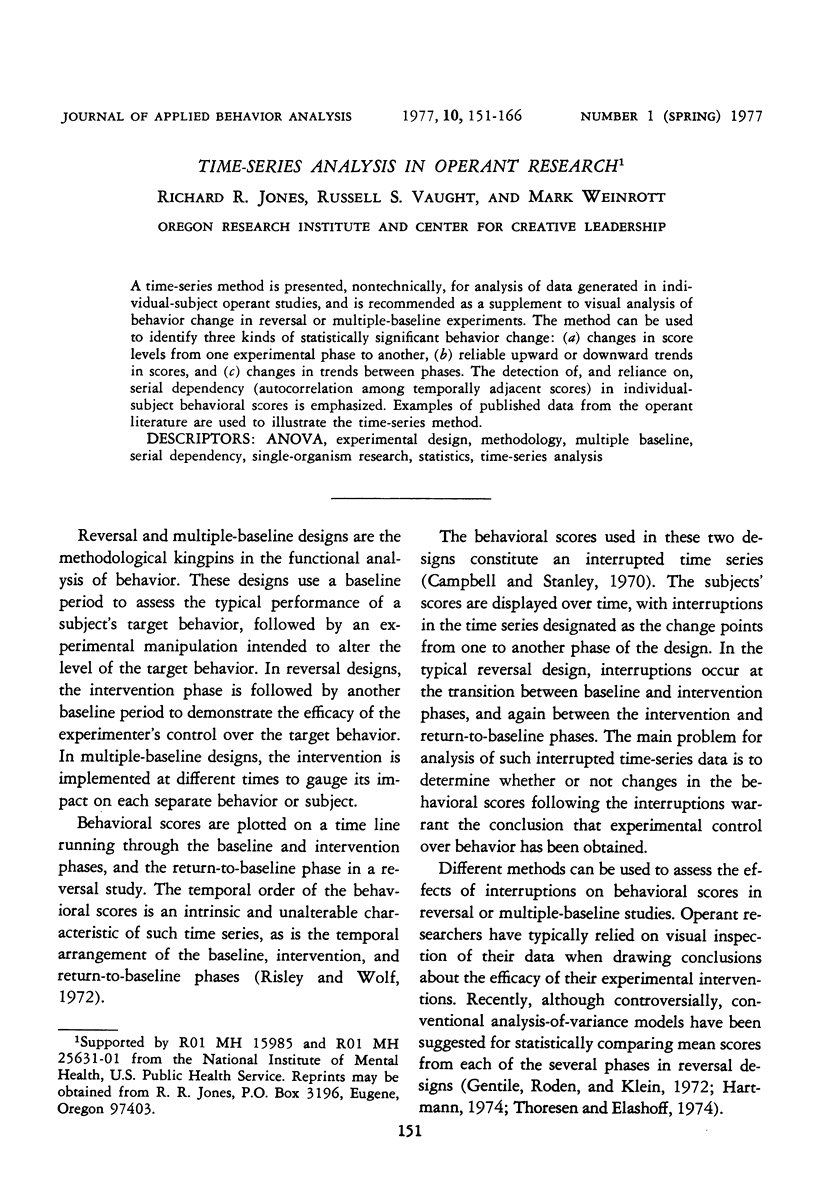
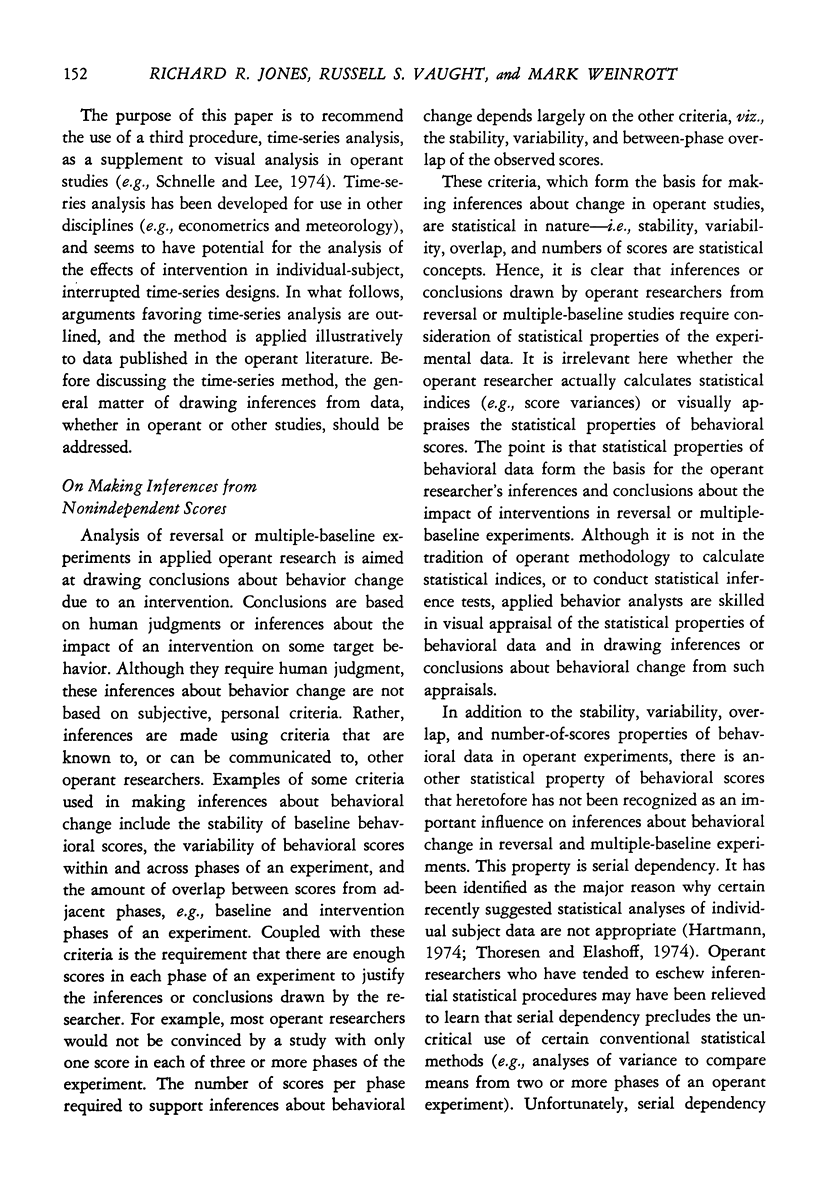




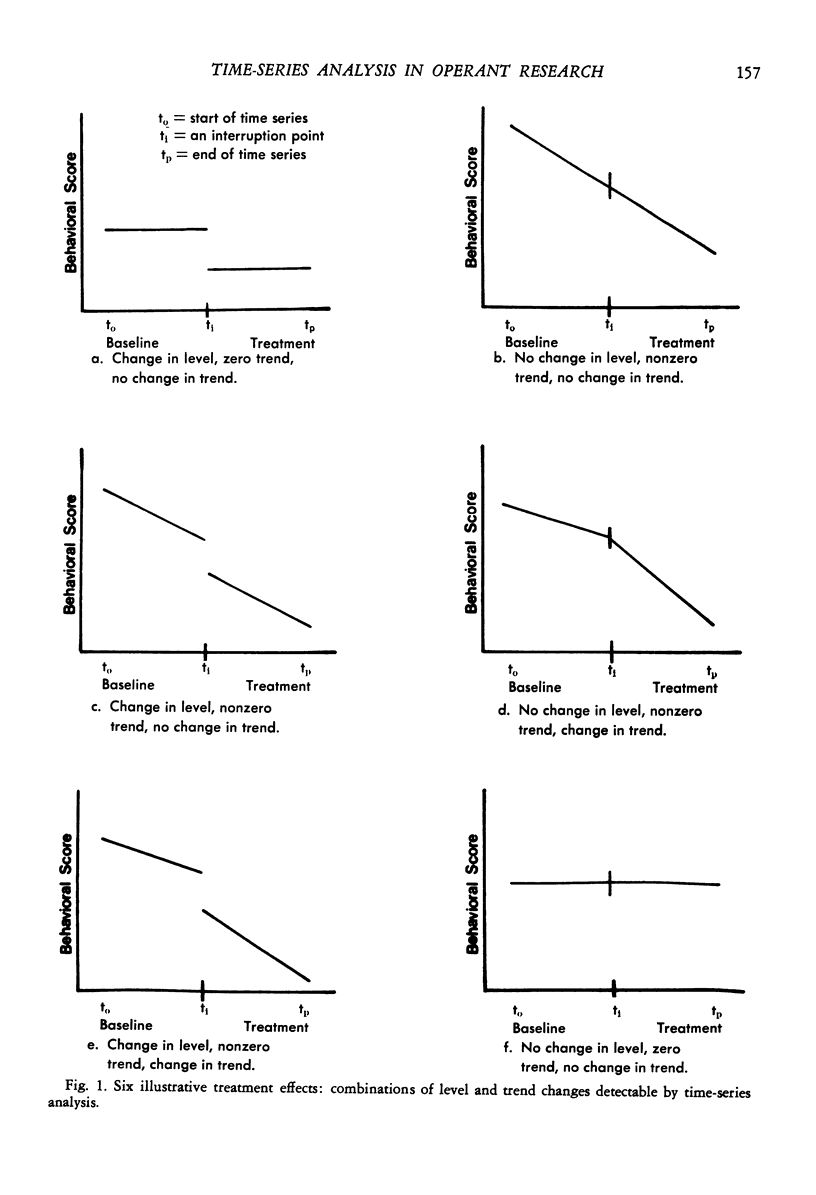


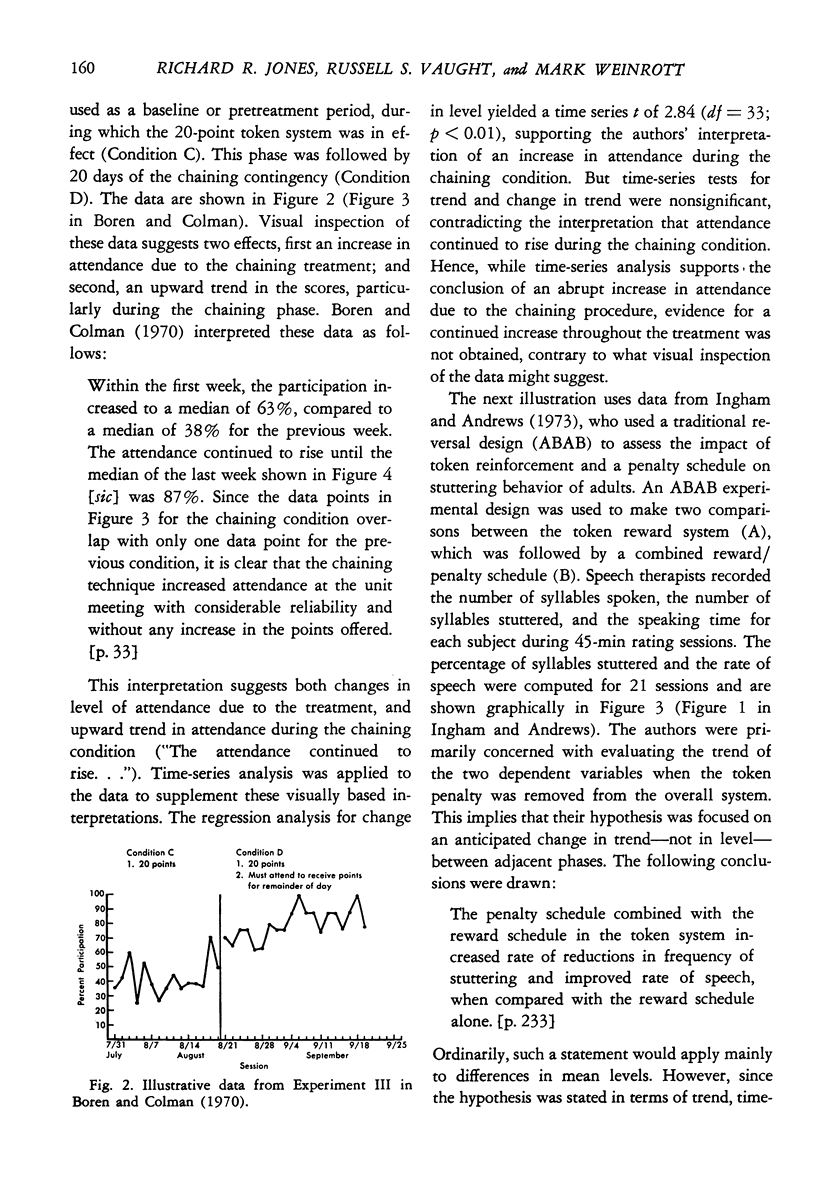
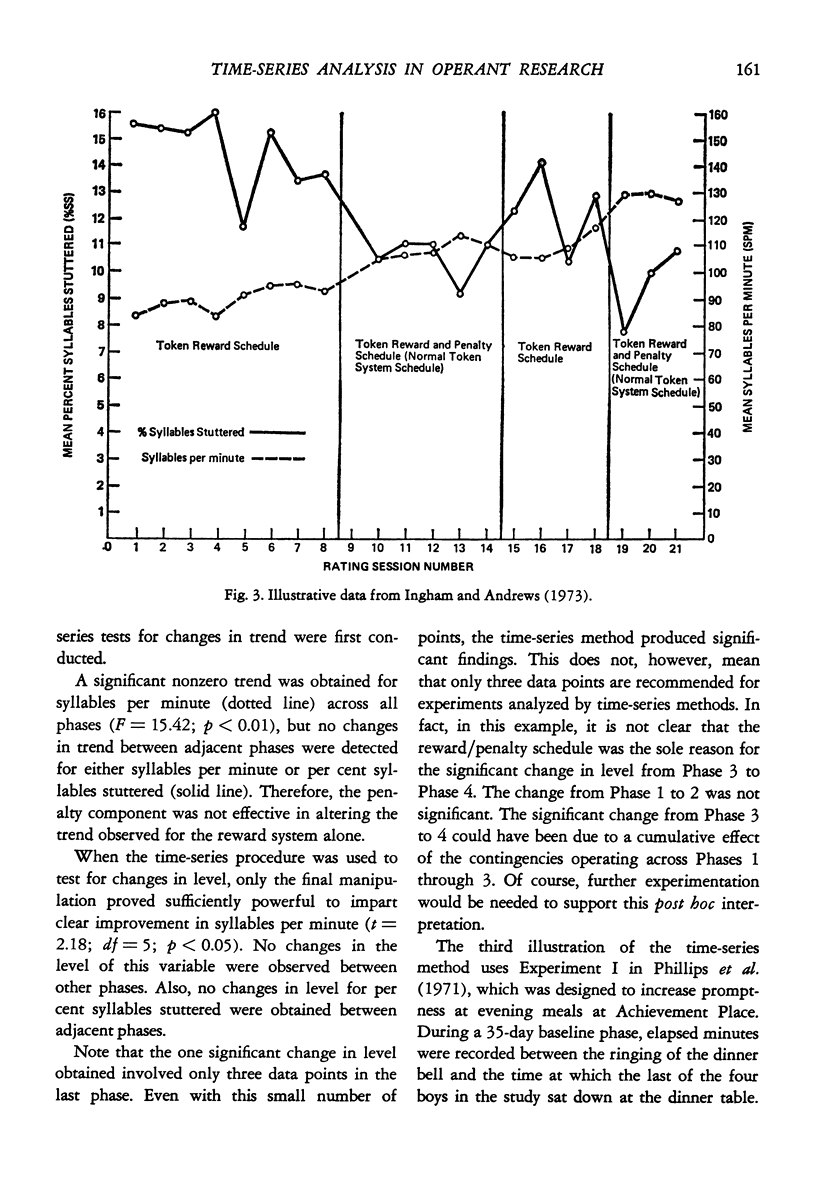


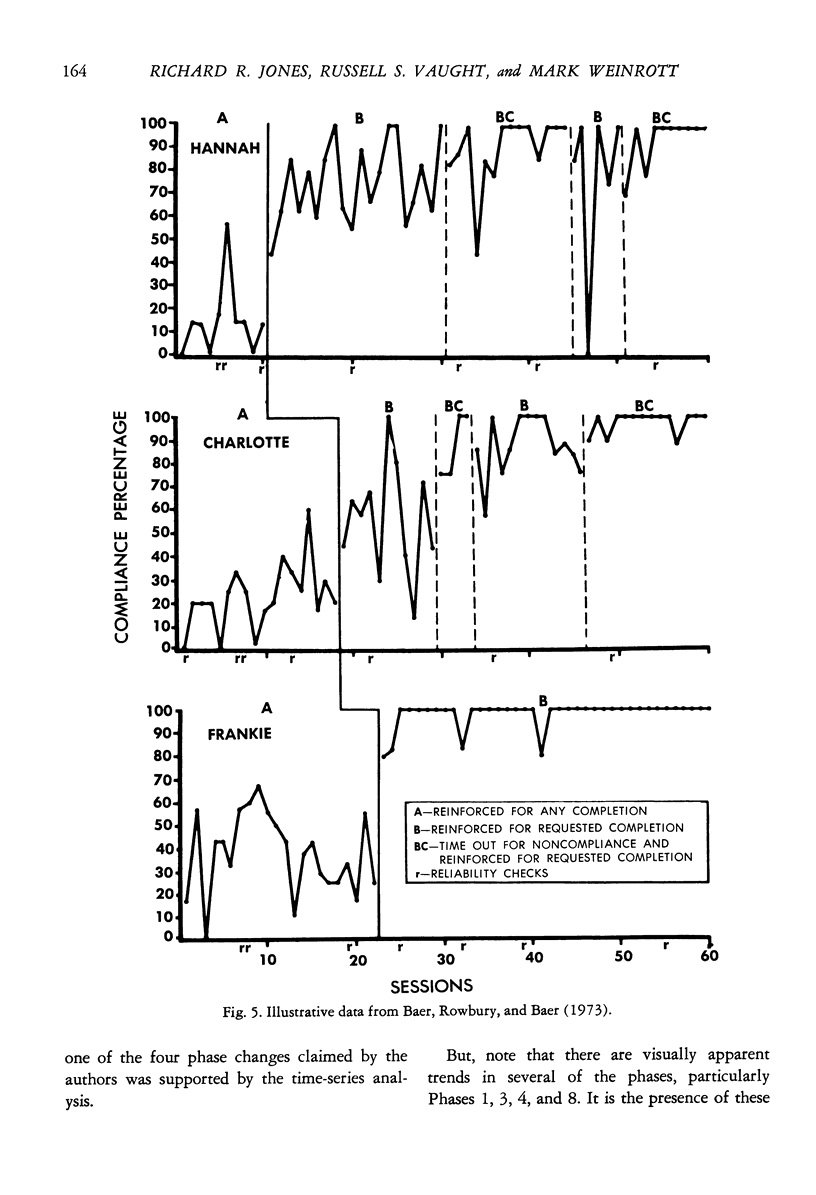

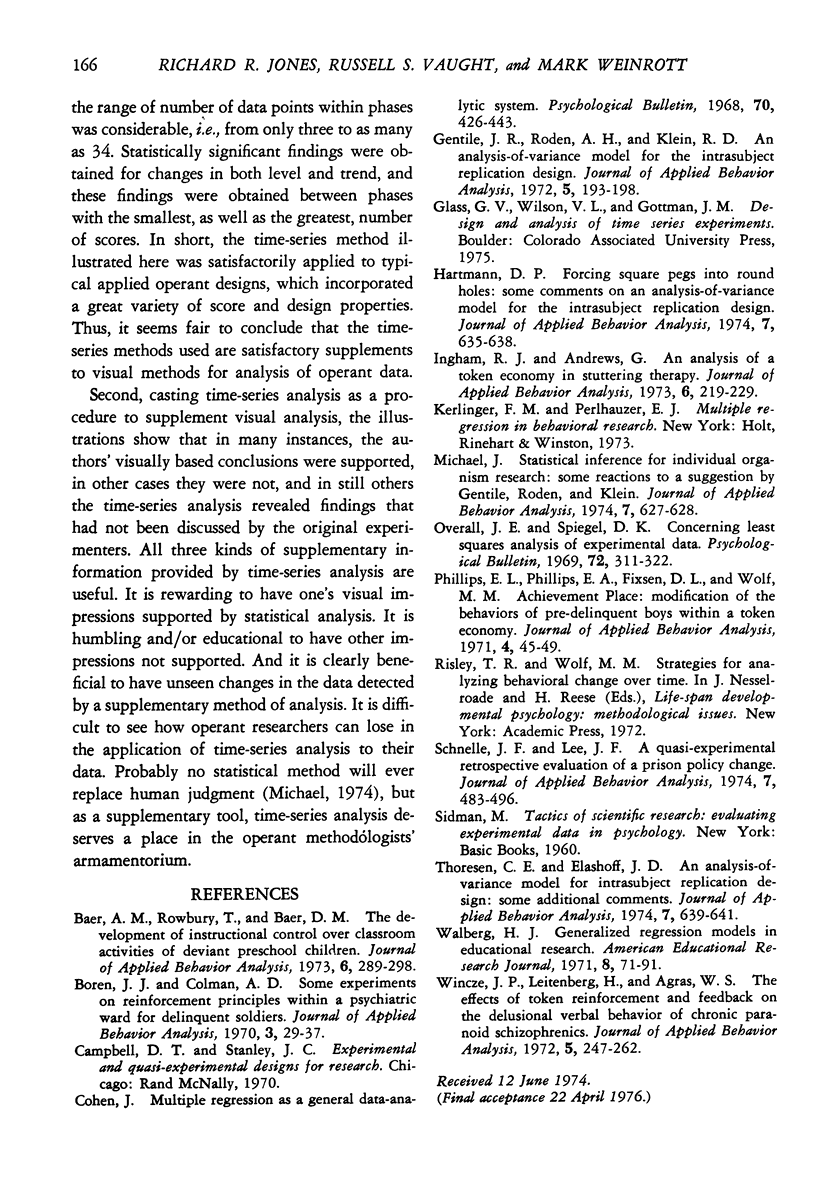
Selected References
These references are in PubMed. This may not be the complete list of references from this article.
- Baer A. M., Rowbury T., Baer D. M. The development of instructional control over classroom activities of deviant preschool children. J Appl Behav Anal. 1973 Summer;6(2):289–298. doi: 10.1901/jaba.1973.6-289. [DOI] [PMC free article] [PubMed] [Google Scholar]
- Boren J. J., Colman A. D. Some experiments on reinforcement principles within a psychiatric ward for delinquent soldiers. J Appl Behav Anal. 1970 Spring;3(1):29–37. doi: 10.1901/jaba.1970.3-29. [DOI] [PMC free article] [PubMed] [Google Scholar]
- Gentile J. R., Roden A. H., Klein R. D. An analysis-of-variance model for the intrasubject replication design. J Appl Behav Anal. 1972 Summer;5(2):193–198. doi: 10.1901/jaba.1972.5-193. [DOI] [PMC free article] [PubMed] [Google Scholar]
- Hartmann D. P. Forcing square pegs into round holes: some comments on "an analysis-of-variance model for the intrasubject replication design". J Appl Behav Anal. 1974 Winter;7(4):635–638. doi: 10.1901/jaba.1974.7-635. [DOI] [PMC free article] [PubMed] [Google Scholar]
- Ingham R. J., Andrews G. An analysis of a token economy in stuttering therapy. J Appl Behav Anal. 1973 Summer;6(2):219–229. doi: 10.1901/jaba.1973.6-219. [DOI] [PMC free article] [PubMed] [Google Scholar]
- Michael J. Statistical inference for individual organism research: some reactions to a suggestion by Gentile, Roden, and Klein. J Appl Behav Anal. 1974 Winter;7(4):627–628. doi: 10.1901/jaba.1974.7-627. [DOI] [PMC free article] [PubMed] [Google Scholar]
- Phillips E. L., Phillips E. A., Fixsen D. L., Wolf M. M. Achievement Place: modification of the behaviors of pre-delinquent boys within a token economy. J Appl Behav Anal. 1971 Spring;4(1):45–59. doi: 10.1901/jaba.1971.4-45. [DOI] [PMC free article] [PubMed] [Google Scholar]
- Schnelle J. F., Lee J. F. A quasi-experimental retrospective evaluation of a prison policy change. J Appl Behav Anal. 1974 Fall;7(3):483–494. doi: 10.1901/jaba.1974.7-483. [DOI] [PMC free article] [PubMed] [Google Scholar]
- Thoresen C. E., Elashoff J. D. "An analysis-of-variance model for intrasubject replicaiton design": some additional comments. J Appl Behav Anal. 1974 Winter;7(4):639–641. doi: 10.1901/jaba.1974.7-639. [DOI] [PMC free article] [PubMed] [Google Scholar]
- Wincze J. P., Leitenberg H., Agras W. S. The effects of token reinforcement and feedback on the delusional verbal behavior of chronic paranoid schizophrenics. J Appl Behav Anal. 1972 Fall;5(3):247–262. doi: 10.1901/jaba.1972.5-247. [DOI] [PMC free article] [PubMed] [Google Scholar]


